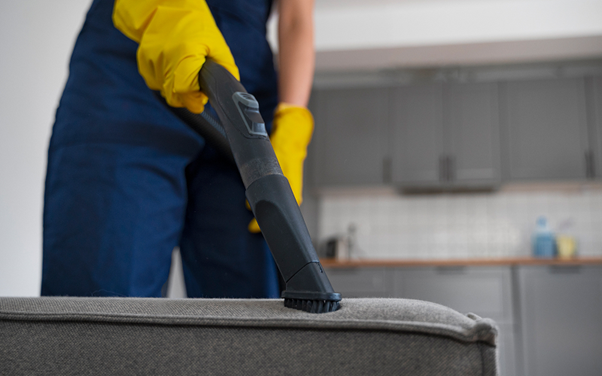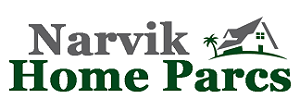Choosing Between Steam and Dry Sofa Cleaning Services in Singapore

Sofas trap dust, bacteria, and stains over time. Without regular upkeep, fabric deteriorates and odours spread. Choosing the right method matters. In Singapore, professional cleaning services offer two main options: steam and dry sofa cleaning. Each method delivers results for different fabric types, so selection depends on use, material, and stain condition. Learning the differences helps in making the right call without guesswork.
Understanding Sofa Cleaning Methods in Singapore
Sofa cleaning in Singapore follows two main approaches: steam cleaning and dry cleaning. Each method serves a different purpose, depending on fabric type, level of dirt, and drying time requirements. Steam cleaning relies on hot water vapour to remove grime, while dry cleaning involves minimal moisture with specialised solvents.
Steam cleaning suits synthetic upholstery. It penetrates deep, softening and extracting built-up dirt, allergens, and bacteria. Cleaning crews apply high-temperature vapour and suction to dislodge residue. This method removes odours and freshens up fabric.
Dry cleaning offers a safer alternative for delicate upholstery like silk, suede, or non-colourfast materials. Technicians use solvent-based compounds and low-moisture foam to lift stains. The process prevents watermarks, shrinkage, and damage from overwetting. It also reduces drying time significantly.
Choosing between methods depends on fabric compatibility, cleaning intensity, and urgency. Each method has pros and cons. Understanding both helps ensure suitable results from any cleaning service in Singapore.
Pros and Cons of Steam Cleaning
Steam sofa cleaning in Singapore appeals to households dealing with tough stains, embedded dirt, or allergens. Steam delivers sanitising results without harsh chemicals. It works well on polyester, microfiber, and tightly-woven fabrics.
Steam cleaning reaches the inner layers of upholstery. Using high-pressure steam and vacuum suction, technicians extract loosened particles and debris. The method eliminates dust mites and bacteria efficiently. Homes with pets, smokers, or allergies benefit from this approach.
However, drying takes longer. Depending on ventilation, upholstery may stay damp for several hours. Using fans or air conditioning helps accelerate the process. Steam cleaning also poses risks for colour bleeding or fabric shrinkage on sensitive materials.
Service providers inspect sofas beforehand to determine suitability. They identify labels and test fabric reactions before applying heat. If the sofa’s fibres cannot withstand moisture or high temperature, dry cleaning becomes the safer option.
Pros and Cons of Dry Sofa Cleaning
Dry sofa cleaning in Singapore provides a faster turnaround and gentler handling for fabrics sensitive to moisture. This method typically involves the application of biodegradable compounds or dry foam, which attract and bind with embedded dirt. Technicians then perform a thorough vacuum extraction to lift contaminants from the fabric surface. The low-moisture nature of this process helps prevent issues such as discolouration, fabric shrinkage, and mould formation.
Delicate or vintage upholstery with dyes, stitching, or padding that reacts poorly to water benefits from dry methods. It works well for high-end leather, suede, or intricate textures. Dry cleaning suits clients needing same-day drying and low disruption.
That said, dry cleaning may not deliver the same level of deep sanitisation as steam cleaning. While effective for light maintenance, it may require repeat sessions for sofas that are heavily soiled or strongly odorous. Certain stubborn, water-soluble stains may also resist removal through dry methods alone.
Before treatment begins, professional technicians assess the fabric’s compatibility with chemical agents. A test patch on a hidden area ensures that cleaning products do not damage the material. Although dry cleaning is gentler overall, its ability to eliminate deep-seated bacteria and allergens is typically lower than that of high-temperature steam cleaning.
Choosing the Right Sofa Cleaning Service in Singapore
Selecting the appropriate cleaning method starts with understanding your sofa’s material and specific care needs. Begin by checking the manufacturer’s label for cleaning codes:
- S code: Dry-clean only
- W code: Water-based cleaning allowed
- WS code: Both methods acceptable
These indicators help determine whether dry or steam cleaning is suitable. When in doubt, consult a professional sofa cleaning service in Singapore to avoid causing irreversible damage to delicate upholstery. Their expertise ensures that the cleaning process aligns with your sofa’s fabric type and condition, delivering optimal results with minimal risk.
Experienced cleaning services in Singapore inspect sofas on-site before confirming the method. They explain risks, advantages, and expected outcomes. Reputable providers send trained staff with commercial-grade equipment and suitable cleaning agents.
Choose companies that provide transparent quotations. Reliable providers avoid hidden charges. Check if they charge per seat, per session, or by fabric type. Ensure coverage includes pre-treatment, deodorisation, and stain removal where applicable.
Also, verify drying times and aftercare instructions. Technicians should advise on ventilation and stain prevention tips post-cleaning. Review customer testimonials or request before-and-after photos from previous jobs. Prioritise providers offering flexible scheduling and follow-up support.
Clients expecting results must partner with cleaners who match method to fabric, not offer a one-size-fits-all solution.
Final Thoughts
Sofa cleaning in Singapore demands proper method selection. Steam cleaning targets deeper dirt and allergens but involves longer drying. Dry cleaning offers quicker recovery and fabric safety but may lack deep disinfection.
Assess material, usage, and expectations before booking. Reliable cleaning services in Singapore examine fabric and stains before recommending solutions. Always clarify service scope, method used, and aftercare.
Contact Clean Off for a professional sofa cleaning service in Singapore tailored to your fabric, needs, and schedule.

